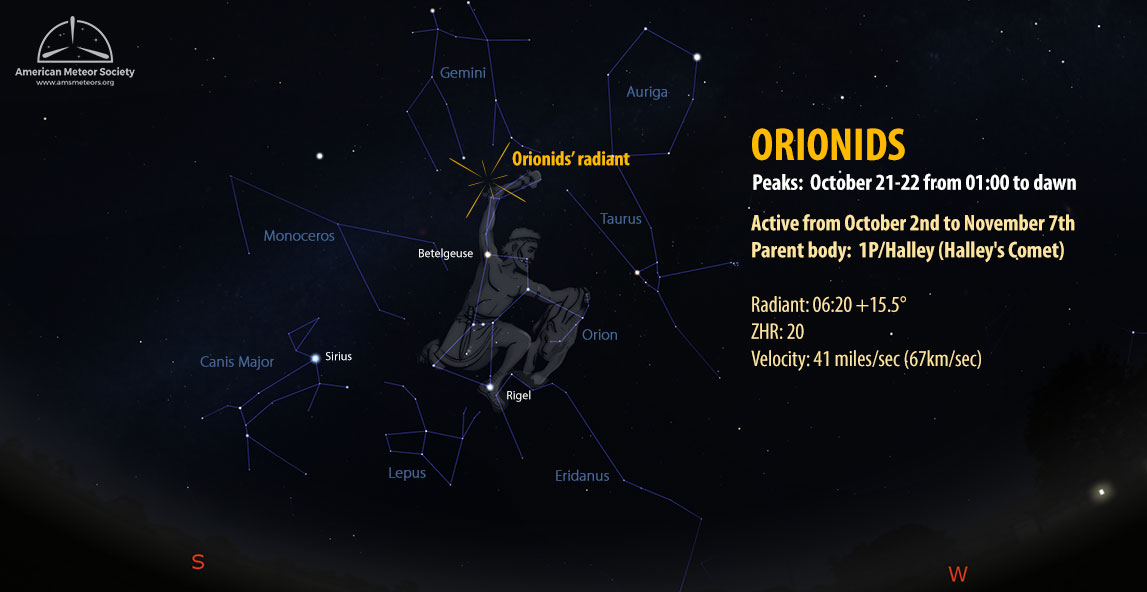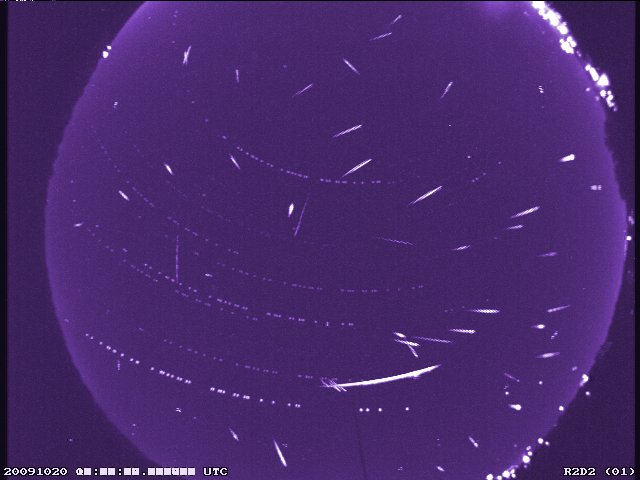Each October the Earth passes through the inbound debris of Halley’s Comet to produce the Orionid Meteor Shower. Activity is usually low until mid-month, when we pass closer to the core of these orbits.
This year the maximum activity is predicted to occur on the morning of October 21st, when up to 20 swift Orionid meteors should be visible per hour from rural locations away from city lights. Orionid meteors are not visible until after 22:00 (10pm) local daylight saving time as the source of these meteors does not rise above the eastern horizon until then. The best time to see these meteors is from 01:00 to dawn, when the Orionid radiant lies in excess of 30 degrees above the horizon. At the time of maximum activity the source of these meteors lies just east of the faint club of Orion. This position also lies about 10 degrees northeast of the bright orange star known as Betelgeuse (alpha Orionis). 10 degrees is equal to one’s fist with your arm held straight out.

The bright moon often interferes with viewing meteor activity by obscuring the fainter meteors. We will not encounter any such problems this year as the waxing crescent moon sets just as the Orionid rises in the opposite side of the sky. With the moon out of the way the only things that would stop you from seeing the show would be clouds and bright city lights. There is not much can do about cloud cover other than checking at later times during the morning. If the entire night is lost to clouds you can try again on the next night as Orionid activity will be almost as strong on the night of October 21/22. As for bright city lights, it is highly recommended that you find a safe rural observing spot away from city lights as the more stars you can see, the more meteors you will count.
The best way to see these meteors is to lie in a comfortable lounge chair with the back angled so that you are looking about half-way up in the sky. You can look straight up if your sky near the horizon is brightly lit, but more meteors are seen in the lower half of the sky than straight up as you are looking through a much thicker column of the atmosphere. I would recommend facing due south so that you can also distinguish minor meteor activity that is coming from Taurus, Gemini, and Leo Minor. Taurid meteors would be slower than the Orionids while those from Gemini and Leo Minor would also be swift, like the Orionids. These minor showers usually only produce about 2 meteors per hour at best. There are also random meteors that do not belong to any recognizable source. On October mornings these random meteors normally usually number about 10 per hour.

Viewing meteor activity is a great way to easily contribute to science by being a citizen scientist. In order to produce scientifically useful data you need to view for at least one hour and provide shower associations with each meteor you witness. It also is necessary to provide us with the magnitude of the faintest star you can see. This is easily done by counting the number of stars visible with certain areas of the sky – see also https://www.imo.net/observations/methods/visual-observation/ and here for more tips on viewing meteor showers. In order to share your observations it is necessary to fill out a visual meteor report form on the International Meteor Organization.
We wish you good luck and look forward to seeing your viewing results!
 American Meteor Society
American Meteor Society
The friend who sent your site to me provided me with a most fascinating new area of study. I thank your organization for the work you do, for allowing the publication of these videos, and for awakening me to an entirely new and important interest.
Great article! Got a photo of an Orionid meteor yesterday.
Enjoyed the article. Got a photo of an Orionid meteor yesterday.